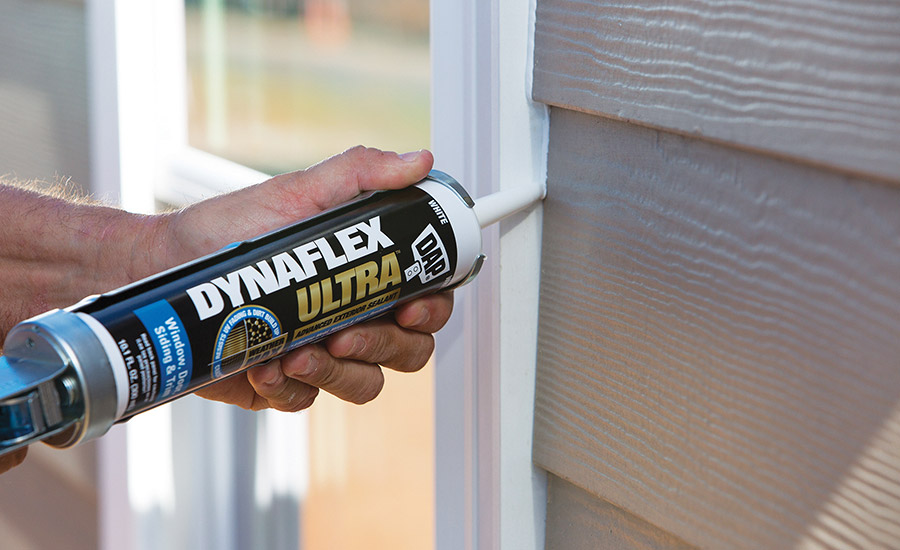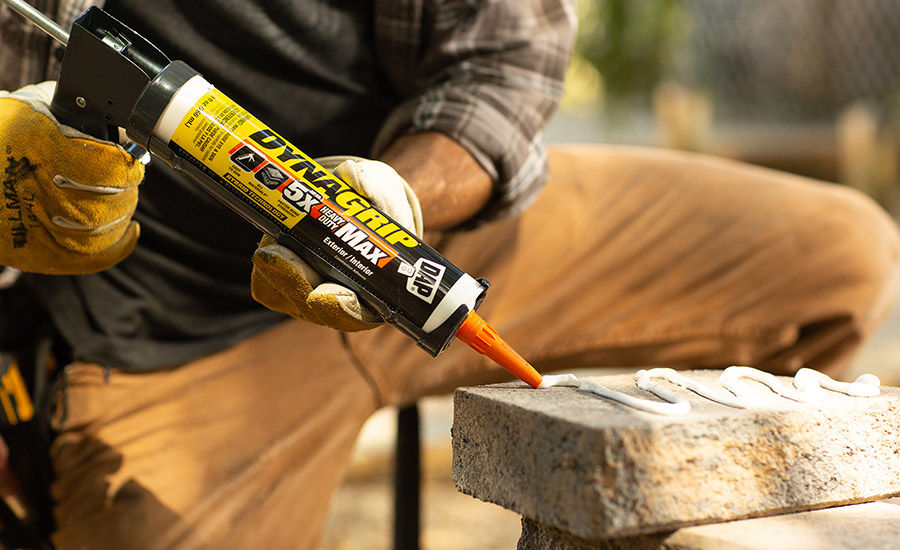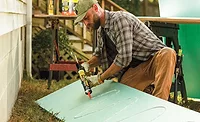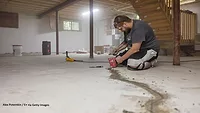New Trends in Construction and Remodeling Sealants and Adhesives
As builders look for better sealant and adhesive solutions for their remodeling and construction projects, several new industry product trends are emerging.

Adhesives and sealants are critical tools for building projects and on the job site. As builders look for better sealant and adhesive solutions for their remodeling and construction projects, several new industry product trends are emerging.
Polyurethane Foam Adhesives
The use of polyurethane foam adhesives continues to see steady growth in a variety of building and construction applications, including subfloor installation. Significantly higher yields, faster application, and superior bond strength all contribute to a more efficient (and profitable) subfloor installation project. The collapsing foam formula provides significant polyurethane bond strength and, when applied with a foam gun, product can easily be reused on the next install.
When making the product selection, contractors should look for polyurethane foam adhesives that offer superior adhesion strength and strong warranties. Select a product that bonds all types of wood, plywood, oriented strand board (OSB), and moisture-resistant OSB panels and bonds to wet, frozen, and treated lumber.
One product developed specifically for subfloors is a high-strength polyurethane foam adhesive1 that is faster and easier to use than traditional cartridge adhesives. A single can equates to eight 28-oz traditional cartridges, so construction professionals can do more with less. The foam is also compatible with a 46-in. applicator gun2 that reduces reaching, bending over, and walking on joists for 25% faster application.
Water-Repelling Water-Based Sealants
Water-based technology is getting more and more advanced as contractors demand sealants with superior performance matched with ease of use, paintability, and volatile organic compound (VOC) requirements. As technology advancements in sealants increases, users can get higher performance characteristics in easy-to-use water-based latex formulas that include features such as the ability to repel water, dirt, and stains so the sealant is easier to clean. Some of the latest technologies are both water- and rain-ready in 1 hr, ensuring that the sealant works quickly after application.

Water-based sealants can be formulated to ensure long-lasting, all-weather protection.
Superior polymers create sealants that allow water to “bead” up on the surface of the sealant and won’t allow water to settle. This feature provides a 100% waterproof seal that helps prevent the growth of mold, mildew, algae, and stains.
One exterior sealant3 features technology4 that ensures long-lasting, all-weather protection. Ideal for sealing windows and doors, this latex sealant provides resistance to UV, mold, mildew, and algae, as well as a durable, 100% waterproof seal that stands up to the elements. It also stays permanently flexible to endure the expansion and contraction caused by sun, heat, cold, wind, and rain.
Another example is an interior sealant5 that has been specifically developed for kitchen and bath applications. It is formulated with ultra-hydrophobic technology that repels water, dirt, and stains and offers a lifetime mold and mildew resistance guarantee so the sealant remains looking clean, fresh, and new.

Interior sealants formulated with ultra-hydrophobic technology repel water, dirt, and stains.
Hybrid Sealants and Adhesives
Silicone and polyurethane adhesives and sealants have been on the market for years, but as construction professionals know, these products can have limitations. Hybrid technology has been developed to fill these performance gaps.
Typically, today’s “hybrid” is a sealant or adhesive that takes elements from both silicones and polyurethanes to create a high-performance sealant that accepts paint and offers excellent durability, adhesion, and overall performance. These products are often also referred to as “modified polymers.”
While hybrid technology is prevalent in the sealants market, this technology is also becoming much more common in the adhesives market as well. The adhesive advancements deliver even faster bonds, which significantly reduce the amount of clamping and bracing needed on even the toughest and heaviest applications.

Specially formulated hybrid adhesives are able to combine a powerful instant grab with a strong permanent bond and excellent adhesion on common building materials.
Featuring faster bond strength, one hybrid adhesive6 is designed for heavier applications where bond strength and cure speed are critical. With robust adhesion to porous and non-porous building materials, the adhesive features a powerful instant grab, along with a strong permanent bond and excellent adhesion on common building materials for both interior and exterior construction and remodeling projects.
A professional-grade hybrid sealant7 was specifically developed for professional window, door, siding, and trim installations. The all-weather elastomeric sealant offers maximum adhesion and flexibility, is 1-hr paint ready, and is 100% waterproof and weatherproof.
Antimicrobial Sealants
The COVID-19 pandemic has had a major impact on the increasing adoption and use of antimicrobial products in numerous industries, including in the building and construction sector. As a result, manufacturers of sealants have developed products to meet this demand.
Contractors should look for products that offer guarantees supporting their antimicrobial protection claims. For example, one siliconized adhesive sealant8 is formulated with antimicrobial technology9 that fights the growth of stain and odor-causing bacteria, mold, and mildew on the sealant. This advanced technology helps neutralize bacterial and fungal growth where it lives and breathes, ensuring that the sealant is easier to keep clean and stays cleaner longer.
Flexibility Factors
Construction professionals understand that certain applications or environments require a sealant with higher levels of elongation, or flexibility. A sealant with more flexibility helps to accommodate the expansion and contraction of building materials that result from factors such as seasonal climate changes and extreme temperatures. A proper sealant strongly adheres to the surface and stays durable over time without cracking or losing adhesion to the substrate.
Sealant manufacturers test flexibility in many ways, but one way to understand the flexibility rating of a product is to look for the ASTM C920 performance specification on either the label or technical data sheet (TDS). Sealants that meet C920 are run through more stringent testing on several different performance characteristics, including flexibility.
It’s also important to look at the C920 “class” information, which is usually 12.5, 25, or 35 for residential construction-grade products. A label showing C920 ± 25 indicates that the sealant has been tested through multiple cycles of expansion and compression by 25% of the original gap size. The higher the class number, the more flexible the product. As higher flexibility usually indicates a higher quality and price, it’s important for professionals to understand the right amount of flexibility needed for their jobs.
When it comes to the use of adhesives and sealants in the construction industry, product knowledge and selection can go a long way in ensuring a project is completed quickly and correctly for a long-lasting result.
For more information, visit www.dap.com.
Editor’s note: Products from DAP referenced in this article include: 1. SmartBond®, 2. Touch N’ Seal, 3. Dynaflex Ultra™ Advanced Exterior Sealant, 4. Weather Max™, 5. Kwik Seal Ultra®, 6. DynaGrip® Heavy Duty MAX, 7. Dynaflex® 800, 8. Kwik Seal Plus®, and 9. MoldGuard Antimicrobial Product Protection.
Note: Images courtesy of DAP.
Looking for a reprint of this article?
From high-res PDFs to custom plaques, order your copy today!






